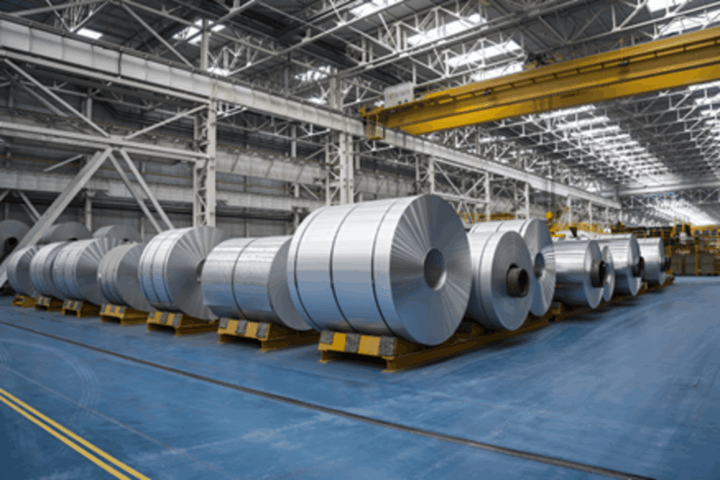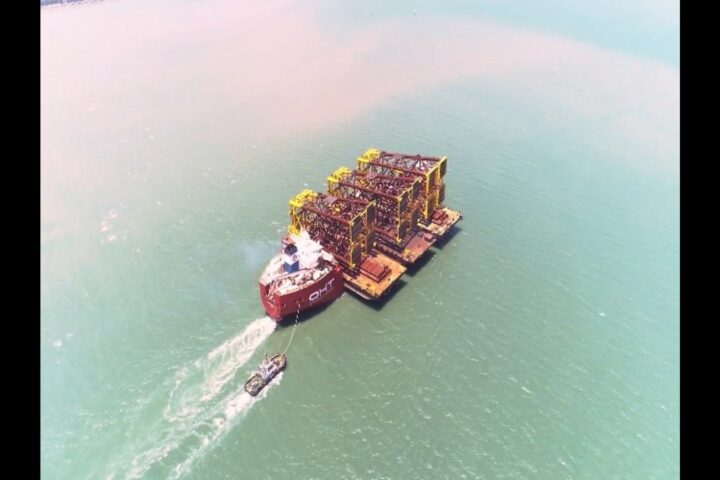Sustainability has become a key priority for the stainless steel sector. What are your association’s long-term sustainability goals, and how are you aligning them with global climate targets?
At ISSDA, sustainability is not a slogan; it is integral to the very DNA of stainless steel. Our long-term sustainability goal is to position stainless steel as India’s most circular, low-carbon, and future-ready material. We are aligning our initiatives with India’s national commitments under the Paris Agreement and the Net Zero 2070 roadmap, while also reflecting the global targets of the International Stainless Steel Forum (ISSF). This includes promoting low-carbon production routes, enhancing scrap utilisation, supporting the readiness of green hydrogen, and facilitating awareness of life cycle costs across user sectors. Our mission is simple: to ensure that every tonne of stainless steel produced and used in India contributes positively to the three pillars of sustainability – People, Planet, and Profit.
Steelmaking is energy-intensive and carbon-heavy. What steps are you taking to reduce carbon emissions — such as adopting electric arc furnaces, waste heat recovery systems, green hydrogen, or carbon capture technologies?
Nearly 70–75% of India’s stainless steel is produced through the Electric Arc Furnace (EAF) and Induction Furnace routes, both of which are inherently less carbon-intensive than traditional blast furnaces. This gives our industry a natural head start in decarbonisation. Our member companies are increasingly investing in waste heat recovery systems, energy-efficient furnaces, and advanced off-gas treatment technologies to reduce specific energy consumption and emissions. ISSDA can also facilitate knowledge exchange with global experts on green hydrogen readiness and carbon capture, utilisation and storage (CCUS) through its International Institutional Partners, ensuring that Indian producers are aligned with the evolving decarbonisation technologies of the future.
How is your association working to transition towards renewable energy sources in steel/ stainless steel production?
Transitioning to renewables is central to ISSDA’s sustainability vision. Many of our member plants are already sourcing a growing share of their power from solar and wind installations through open access and captive models. ISSDA is encouraging member companies to adopt hybrid renewable energy portfolios, combining solar, wind, and storage, to ensure a stable and sustainable power supply. We are ready to initiate dialogues with energy developers and state agencies to facilitate green power corridors for the stainless steel clusters, if our members require ISSDA to assist them in this respect. Our broader goal is to progressively increase the share of renewables in stainless steel production, thereby reducing the overall carbon footprint per tonne of steel.
Stainless Steel is 100% recyclable. How is your association promoting recycling and scrap usage in the steel sector to build a circular economy?
Circularity is the strongest pillar of stainless steel’s sustainability. The material is 100% recyclable without any degradation of quality, and on average, 80~95% of the input material used in stainless steel production globally is recycled scrap. ISSDA is actively promoting this strength by advocating for a robust stainless steel scrap ecosystem in India, including formal scrap collection and processing networks; engaging with policymakers to ensure separate HS codes and simplified import norms for high-grade stainless steel scrap; and conducting awareness programs for downstream users to highlight the long-term environmental and economic benefits of using recycled stainless steel. A well-functioning circular ecosystem will help India reduce dependence on virgin raw materials and move closer to a closed-loop economy.
What measures have you adopted to reduce water usage, manage slag and other by-products, and minimise waste in your plants?
Our member plants follow the “Zero Liquid Discharge (ZLD)” philosophy, where every drop of water is treated, recycled, and reused within the process. Closed-loop water circuits, efficient cooling systems, and rainwater harvesting are now standard practices across major stainless steel facilities. Slag and dust, which were once considered waste, are now being repurposed as construction aggregates, cement additives, and road base materials, reducing landfill and conserving natural resources. ISSDA encourages the adoption of ISO 14001-certified environmental management systems, and several of our members have achieved this standard. The focus is on minimising waste at source and viewing every by-product as a resource in transition.
The government is planning to implement green-rated steel in central government projects and centrally sponsored schemes starting FY28. How is your association preparing for this transition, and what opportunities or challenges do you foresee in meeting this requirement?
We welcome this forward-looking initiative by the Government of India. ISSDA is already in dialogue with the Ministry of Steel, Bureau of Indian Standards (BIS), and other stakeholders to align the stainless steel industry with the Green Steel framework. Our members are preparing for this transition by adopting Life Cycle Assessment (LCA) methodologies, Environmental Product Declarations (EPDs), and exploring green certification standards for their products. The opportunity lies in making stainless steel the material of choice for sustainable infrastructure, from water supply to transport, from architecture to industrial projects. The main challenge will be in creating uniform definitions, metrics, and certification pathways, which ISSDA is actively working to support.
What role do digitalisation, AI, or IoT play in improving energy efficiency, reducing emissions, and monitoring sustainability in your operations?
Digitalisation is becoming the backbone of modern steelmaking. Our member companies are deploying IoT-based energy management systems, AI-driven process optimisation, and real-time data analytics to improve furnace efficiency, reduce downtime, and track emissions. Predictive maintenance powered by AI is helping to reduce unplanned outages and energy losses, while digital twins are being used to simulate and optimise production processes before implementation. At ISSDA, we are facilitating industry workshops and case studies to share best practices in digital transformation for sustainability, ensuring that even mid-sized producers can benefit from scalable digital tools.
Looking ahead, how do you see the Indian Stainless Steel industry balancing growth with sustainability, and what role do you envision your association playing in driving this transition?
India’s stainless steel demand is projected to grow rapidly with urbanisation, infrastructure expansion, and manufacturing growth. The real challenge, and opportunity, is to ensure that this growth is green, inclusive, and globally competitive. The stainless steel industry is inherently well-positioned to meet this challenge because of its recyclability, corrosion resistance, and long life cycle, all of which contribute directly to sustainability. ISSDA’s role will be to act as a bridge between industry, policymakers, and end-users, promoting science-based approaches to decarbonisation, supporting research and innovation, and enabling global best practices to be localised for Indian conditions. Our vision is for stainless steel to be recognised not just as a material of strength and beauty, but as a material of sustainability and permanence, a true enabler of India’s green growth story.


















